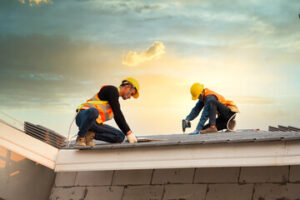Promptly identifying and repairing car problems can prevent them from worsening and potentially save you thousands of dollars. Proper inspections, timely repairs and consistent maintenance can also help you avoid more costly problems down the road.

If you are unhappy with a repair, try to resolve the issue first by talking with the shop manager or owner. If this fails, contact a consumer protection office for assistance. For professional help, contact San Clemente Auto Repair.
The on-board diagnostics system is a computer system that monitors different car components to see how they are performing. The system also looks for error codes that indicate specific problems within the vehicle. When the OBD system detects an issue, it will illuminate a check engine light in the vehicle. This warning indicator helps drivers and mechanics quickly identify the problem and address it.
Mechanics can use the OBD system to determine what type of maintenance is required for a vehicle. The system can also detect and diagnose issues that affect performance, such as low oxygen levels or loose wires. Using the OBD system, technicians can save time and money by identifying problems that would otherwise go unnoticed.
OBD systems are standard across all vehicle manufacturers and use a universal data protocol to communicate with external devices. This standardization allows mechanics to access and interpret error codes faster and more accurately. The OBD system is also helpful for monitoring vehicle compliance with environmental and safety standards.
One of the most significant benefits of the OBD system is that it speeds up diagnostics by providing a wealth of information about the state of the vehicle’s systems. The system can identify any problems that may occur in the engine or other important components, such as the transmission and emissions systems. It will then generate a code that indicates what is wrong with the vehicle. These codes are used to communicate with other devices, such as the car’s dashboard malfunction indicator lights.
Many OBD scanners are able to pull this data from the vehicle’s electronic control unit, or ECU. These scanners are typically plugged into the OBD port, which is located under the driver’s dash. The OBD port is a 16-pin connector that accepts various adapters to connect to the OBD system. Depending on the scanner, some are compatible with all vehicle manufacturers and others have special interfaces to work with specific models.
Some modern OBD systems also have WiFi or Bluetooth integration to enable them to connect to a smartphone. These can be useful for professional drivers and car enthusiasts with custom vehicles. The mobile connectivity also makes it easy to view metrics that are not commonly available in regular vehicles.
Car Manuals
Whether you’re a professional mechanic or an aspiring DIYer, a car repair manual can help you tackle projects from replacing a broken light bulb to major engine repairs. They use clear, step-by-step instructions to guide you through each task, making the process as efficient and safe as possible. They also include important technical details like torque specifications and fluid capacities, which helps ensure you’re using the right tools and applying the correct pressure.
These manuals offer an easy-to-read format with visuals to help you understand complex procedures. They are based on hands-on experience, so you can trust their accuracy. You can choose from Haynes and Chilton, both of which have a reputation for making complicated automotive tasks more manageable. Both have a learning curve, but the Chilton manuals tend to be more streamlined and use simpler language. Haynes manuals can be more detailed, but may not provide as many exploded diagrams or photos.
Another option is the factory service manual (FSM). These are created by the manufacturer and can be more comprehensive. They can be more expensive than other manuals, but they also offer more specific information for each vehicle model.
They can cover every aspect of a vehicle, including the engine, transmission, suspension, brakes, and more. They can even detail how to disassemble and reassemble certain components for easier repairs. In addition, FSMs can offer general maintenance checklists, detailing how often you should change your oil, check tire pressure, or refill and replace various fluids.
An owner’s manual can also offer tips on extending the life of your vehicle. This can include advice on the best way to drive your car to maximize fuel efficiency and how to care for its exterior surfaces, including paint and glass. It can also help you stay prepared for roadside emergencies with instructions on jumpstarting your car, operating the hazard lights, and other essential safety features.
Lastly, an owner’s manual can include important safety information, including how to operate the airbags, seat belts, and cruise control. It can also tell you when to replace your car’s tires, fuses, or windshield wipers.
Internet Resources
Whether you’re a DIY auto repair enthusiast or just getting started, access to trustworthy, step-by-step information is vital. There are many online resources available that offer clear, straightforward advice and video tutorials to guide you through a range of car repairs and maintenance tasks. This can help you save money and extend the life of your vehicle, while also enriching your understanding of how cars work.
Some of these websites provide specific advice for DIY repair projects, while others are geared toward more advanced mechanics. For example, YouTube channel Chris Fix has gained a huge following for his clear and informative videos that demystify complex auto repair projects. He is also skilled at explaining the tools that are needed for a given task and offers helpful tips. This website can be particularly useful for those who are interested in learning more about automotive diagnostics.
For professional mechanics, there are many online resources available to improve their productivity. One popular option is the ASE Training Center, which provides e-textbooks on a variety of topics related to auto repair. Similarly, companies like Your Mechanic allow users to book appointments with vetted mechanics who will come to them in their home or workplace. This service is available in over 15 cities and has a reputation for customer satisfaction.
Another option is the RepairBuddy app, which can be used on mobile devices and provides a wealth of information on vehicle problems. It allows users to enter the error codes from their OBD2 scanner and then displays a detailed description, definition, problems, and solutions. It also includes color-coded wiring diagrams that can help diagnose issues quickly.
Many people struggle to pay for car repair. The cost of repairs can easily deplete emergency funds, and for those without sufficient savings, they can lead to financial crises. Fortunately, there are several organizations that can help people with car repair costs. For instance, Next Level Church in Charlotte, NC, offers labor for minor car repair for single moms who are struggling to make ends meet. They also host fundraisers to cover repair costs for those in need.
Mechanics
A mechanic is a skilled person who repairs or maintains machinery. Auto mechanics specifically fix vehicles. Mechanics typically have a wide range of skills and can perform a broad spectrum of fixes, from oil changes to engine troubleshooting. In addition, they have specialized equipment and diagnostic tools. Mechanics can be self-taught, receiving on-the-job training from other technicians, or trained in a vocational school program that focuses on automotive repair and maintenance. Vocational programs can last anywhere from a few months to two years, depending on the depth and breadth of the curriculum.
Mechanics must have good customer service skills because they interact directly with clients. They need to explain what needs to be done and why, so that clients understand the process and can trust the mechanic. Mechanics who communicate effectively also earn repeat business and referrals, which can be crucial to their success.
If you’re unable to find a good mechanic in your area, ask friends and family for recommendations. If someone says they had a great experience with a particular mechanic, make sure to get their name and number. Ask them if they can recommend him, and then request him every time you need work done on your car. Word of mouth is a powerful tool, and a good mechanic can make or break a shop’s reputation.
A well-trained auto mechanic can diagnose and repair complex issues with today’s complicated cars and trucks. They need a thorough understanding of vehicle systems, including sophisticated electronics and computer diagnostic tools. They should be able to read code and interpret data to identify problems with a vehicle’s sensors, ignition system, transmission, or other mechanical components.
It’s also important for mechanics to be able to troubleshoot intermittent and harder-to-resolve problems. Many modern cars have electrical and driveability problems that can be difficult to pinpoint. Some of these problems are also costly to fix. Mechanics who can accurately troubleshoot these problems can save their customers money and time.
Mechanics who use the right parts will help ensure that your car is running at its best. When possible, you should opt for original equipment manufacturer (OEM) parts, which are essentially duplicates of the car part that’s being replaced. However, if you’re on a budget, it might be worth it to go with an aftermarket car part. Just be sure to check the warranty before buying one.








